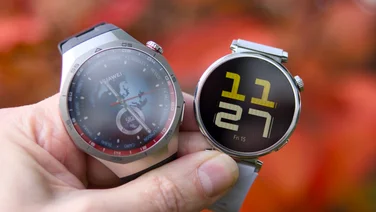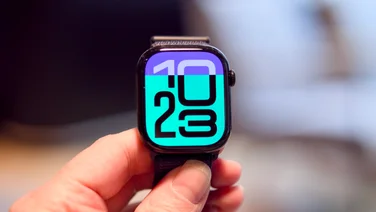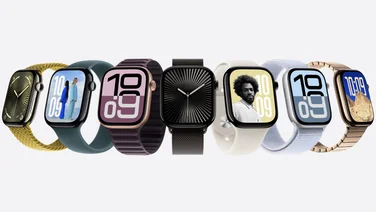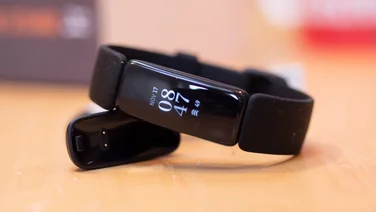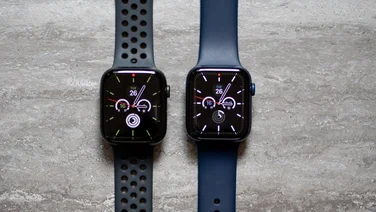To help us provide you with free impartial advice, we may earn a commission if you buy through links on our site. Learn more








- Lightweight, attractive design
- GPS and NFC
- Snapdragon Wear 3100 chip
- Disappointing battery life
- Mediocre performance
The Fossil Sport is the most exciting Wear OS smartwatch in recent memory. Why? Because it uses the new Snapdragon Wear 3100 chip, which Qualcomm promised would deliver improved performance and extended battery life over its previous Wear OS chipset.
Sadly, although it is the best smartwatch the company has made, the Fossil Sport still doesnt make the big strides wed hoped for. It looks and feels great on the wrist but, in terms of performance, the new Wear OS device still lags a considerable way behind Apple and Samsungs latest wearables.








Fossil Sport review: What you need to know
Despite using the Sport moniker, the Fossil Sport actually isnt very different from Fossils 4th-gen smartwatches the Q Explorist, for example. Just like those watches, it runs Googles Wear OS, which manufacturers dont get much of a chance to stamp their own identity on.
It does mean, however, that you can use the Fossil Sport with both iOS and Android devices. The watch also has built-in NFC, so you can make contactless payments when you dont have your phone or wallet handy, and has GPS and heart-rate tracking as well.
The watch is swim proof, although youll need to use a third-party app if you want to record swims. While theres a microphone for interacting with Google Assistant, theres no speaker, so you wont get audio feedback from the watch.








Fossil Sport review: Price and competition
At £250, the Fossil Sports most direct competition comes from the excellent Mobvoi Ticwatch E2 (£146), at least as far as Wear OS devices are concerned. Although its powered by the older Snapdragon 2100, it offers relatively solid performance and battery life along with swim tracking.
If youre not fussed about owning a Wear OS device, the best smartwatches on the market include Samsungs Galaxy Watch (from £280) and the Apple Watch Series 4 (from £399).
If its the sport aspect of the Fossil that appeals most, you might be better off choosing a sports specific watch such as the Garmin Vivoactive 3 (£180), which delivers more accomplished activity tracking, or the even cheaper Garmin Forerunner 35 if youre after a dependable GPS watch at a very low price.
Fossil Sport review: Design
The Fossil Sport is one great looking smartwatch. I was sent the Smoky Blue model but you can also buy it in red and grey. Whichever variant you choose, it has a part-aluminium, part-coloured plastic casing, and comes with a matching silicone rubber strap.
Measuring 43mm in diameter, the Sport is noticeably smaller than the 4th-gen Fossil Q Explorist and it should suit a much larger range of wrist sizes as a result. The only problem is that those with the skinniest wrists might be left wanting an additional hole or two on the strap. Thankfully, the Sport is compatible with all standard 22mm straps so you can easily swap to something else if thats the case.
Along with its diminutive size, the Fossil Sport is also exceptionally light, tipping the scales at 28g without its strap. Thats 2g lighter than the 40mm Apple Watch 4 and 9g lighter than the larger 44mm version. If youve previously been put off Wear OS smartwatches due to their heft, thats certainly not a problem here.








The trade-off is that the Fossil Sport has a small 1.2in screen but it still sharp with a 390 x 390 resolution that makes text easy to read. Unlike some cheaper Wear OS watches, the Fossil Sport also has a light sensor so it can adjust screen brightness according to the current light conditions.
The watch has three buttons on its right edge. The middle button is the main function button and also doubles up as a rotating crown, letting you scroll through menus without using the touchscreen. Thats a really nice touch, not least because it has a nice damped feel to it. The top and bottom buttons load the Fossil and Google Fit apps but can be customised to open any app of your choice.
Flip the watch over, and youll find an optical heart-rate sensor on the watchs reverse. This protrudes a little from the rear casing but not enough to affect comfort in any notable way.








Fossil Sport review: Features and performance
There are no big surprises as far as the Fossil Sports feature set is concerned. As with any Wear OS watch, the watch counts the excellent Google Assistant and an impressively stocked Play Store among its main strengths. Because theres an NFC chip inside, it also supports contactless payments via Google Pay. After only a few minutes of tinkering, I was paying my fares on London Underground from my wrist with a minimum of fuss.
Theres also a built-in heart rate sensor and GPS, so you can log workouts from your watch and leave your phone behind. You can do this with Google Fit, or via a fitness app such Runtastic, Nike Run Club, Strava and Runkeeper. Sadly, although the watch is swim-proof Fossil doesnt specify the level of waterproofing the Google Fit Workout app doesnt have a swim mode as standard, so youll need to install MySwimPro on your watch and smartphone if you want to log your lengths at the local pool.
When I tested the watch’s GPS, I struggled to get a fix using the Google Fit app both in central London and rural Sussex. Fortunately, this wasnt a problem when I tried it with Strava, so it can hopefully be attributed to a software bug thatll be fixed in the near future. Also, if you have your phone nearby with Bluetooth turned on, the Fit Workout app defaults to using Connected GPS, which should eliminate any troubles acquiring GPS for the most part.








As for heart-rate data, when I tested the Fossil Sport against a dedicated optical heart-rate monitor (the Polar OH1), it delivered broadly similar results, showing a near identical maximum heart rate and an average that was 11bpm different. Thats probably good enough for giving you a rough idea how hard youre working out during exercise and, should you want more accuracy, a recent Wear OS update means you can pair the watch with Bluetooth Smart sensors such as external heart-rate straps.
So far, so good, then. But this brings me to my main problem with the Fossil Sport: performance. Menu- and app-load times do feel noticeably quicker than on previous generation Fossil watches but this isn’t the quantum leap forward I was hoping for. To be clear, the Sport still feels considerably slower than the latest smartwatches from Apple and Samsung and youd struggle to split it from the much cheaper Mobvoi Ticwatch E2, which uses the older Qualcomm Wear 2100 chip.
And then theres the thorny issue of battery life. Above all, Qualcomm promised the Wear 3100 chip would bring significant improvements in this area, quoting up to three hours of GPS and heart-rate recording and 1.5 to 2.5 days of typical usage. Ive only had the Fossil Sport for a few days, but thus far Ive struggled to make it last much beyond 24 hours between charges when using it for one short GPS-recorded activity a day. Unfortunately, that means charging every night is inevitable if youre the sort of person who lives a busy, active lifestyle.
The main advantage enabled by the new chip, then, is that the Fossil Sport has a smaller, lightweight build compared to previous watches rather than drastically improved battery life. And, as such, I cant help but wonder what might have been possible if, like Samsung and Apple, Fossil had opted to make two different sized variants of the Sport, the larger one delivering improved battery longevity.
Thanks to the Wear 3100s ultra-low power co-processor, the Sport does at least last several more days in its Watch Mode, where you can only check the time by pressing the main button. However, each time the watch switched to this mode I was hardly pleased to see it since it was usually during or (when I was lucky) immediately after an activity when I wanted to check the stats from my workout.
Fossil Sport review: Verdict
Fossil has made some decent headway with the Sport, that much is pretty obvious. Sadly, however, its still not enough improvement for the smartwatch to be truly competitive. Its a great looking watch but falls short on both speed and battery life compared with the Galaxy Watch and even the Apple Watch 3.
If youre looking to buy a Wear OS watch, you might be better off with the Ticwatch E2, which boasts much the same features for £100 less. Alternatively, if youre after a wearable specifically for fitness tracking, the Garmin Vivoactive 3 is the more savvy investment.


